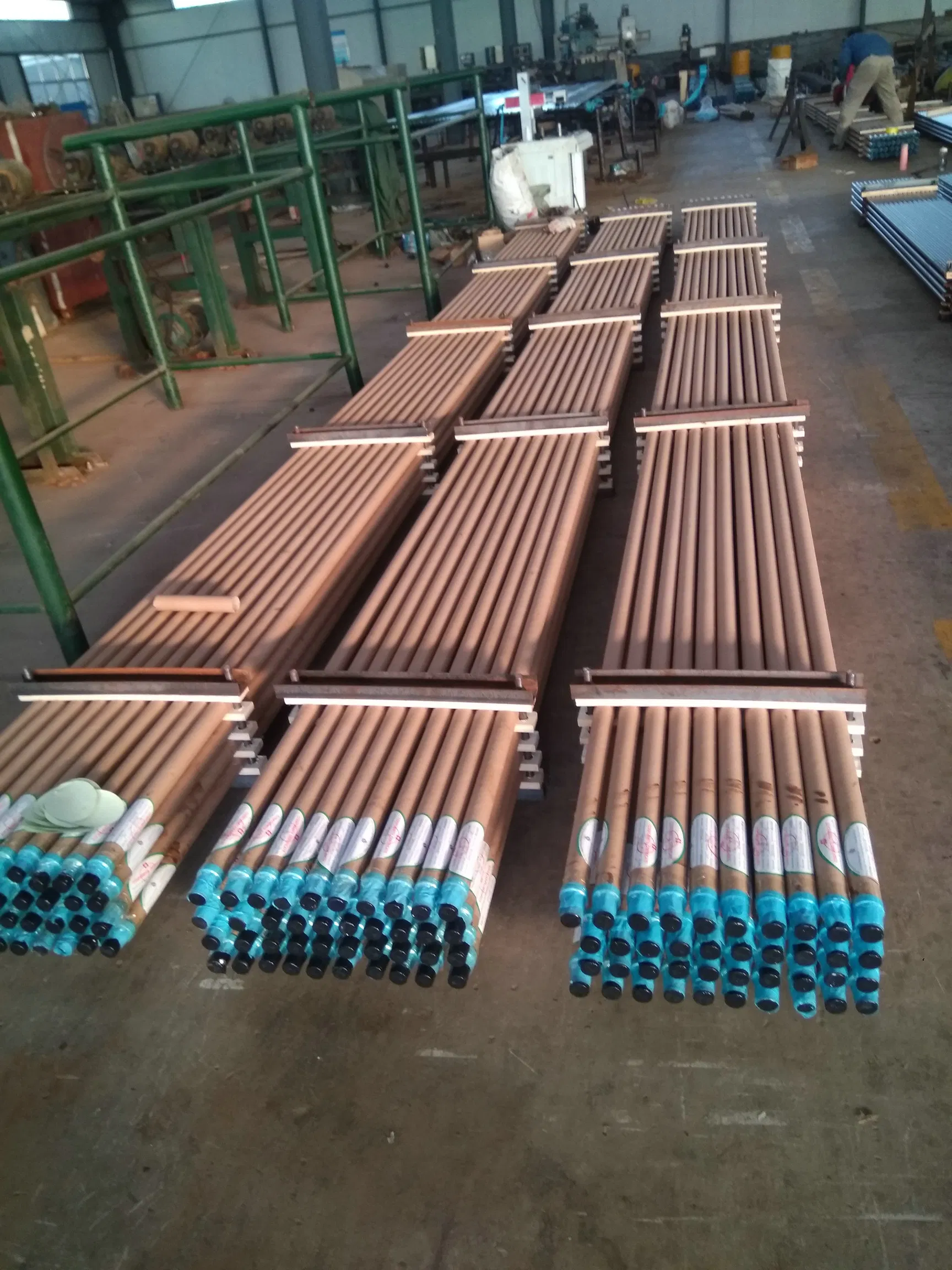Polish rod 1-1/2"
Made from durable materials, the Polish rod offers exceptional strength and corrosion resistance, ensuring reliable operation in challenging environments. Common sizes of sucker rod include 1.5 inches, 1.75 inches, and 2 inches, and the choice should be determined based on factors such as the required pull force and well depth. 1. Common Types and Characteristics of Sucker Rod Sizes Sucker rods are vital components that connect the oil pump to the surface pumping unit. Their primary function is to bear the weight of the oil pump and the impact forces from its up-and-down movement while transmitting the pull force to the drilling rod series. The common sizes of sucker rods include three types: 1.5 inches, 1.75 inches, and 2 inches. The 1.5-inch sucker rod is mainly used for small wells, with a length generally not exceeding 24 meters, characterized by its lightweight and convenience. The 1.75-inch rod is of medium size, suitable for wells of average depth, with lengths typically ranging from 24 to 36 meters. The 2-inch sucker rod is used for deep wells and larger sites, with lengths reaching 36 to 48 meters. 2. Factors in Choosing Sucker Rod Sizes Selecting the appropriate rod size requires consideration of multiple factors, such as the diameter and quantity of the drilling rod series, the required pull force, and well depth. Generally, drilling rod series with different diameters require different rod sizes to ensure their load-bearing capacity meets requirements. Additionally, the deeper the well, the greater the required pull force, which necessitates using thicker rods to transmit that force. In practice, the appropriate rod size should be determined based on well conditions and technical requirements. 3. Load Reduction Effects of Different Rod Sizes The size of the rod not only influences the efficiency of drilling operations but also affects the load reduction effects on the oil pump. Typically, the larger the rod size, the better the load reduction effect of the oil pump. This is because thicker rods exhibit higher stiffness, allowing them to better withstand gravitational and wellbore vibrations, thereby reducing the weight and impact force on the oil pump. Therefore, when using deep wells and heavy oil pumps, thicker rods should be selected whenever possible. Conclusion Sucker rods are important components in underground drilling operations, possessing diverse size characteristics that must be chosen based on actual conditions. Selecting the right rod size can ensure the efficiency and safety of drilling operations.
- Shipping:
Learn More

Made from durable materials, the Polish rod offers exceptional strength and corrosion resistance, ensuring reliable operation in challenging environments.
Common sizes of sucker rod include 1.5 inches, 1.75 inches, and 2 inches, and the choice should be determined based on factors such as the required pull force and well depth.
1. Common Types and Characteristics of Sucker Rod Sizes
Sucker rods are vital components that connect the oil pump to the surface pumping unit. Their primary function is to bear the weight of the oil pump and the impact forces from its up-and-down movement while transmitting the pull force to the drilling rod series. The common sizes of sucker rods include three types: 1.5 inches, 1.75 inches, and 2 inches. The 1.5-inch sucker rod is mainly used for small wells, with a length generally not exceeding 24 meters, characterized by its lightweight and convenience. The 1.75-inch rod is of medium size, suitable for wells of average depth, with lengths typically ranging from 24 to 36 meters. The 2-inch sucker rod is used for deep wells and larger sites, with lengths reaching 36 to 48 meters.
2. Factors in Choosing Sucker Rod Sizes
Selecting the appropriate rod size requires consideration of multiple factors, such as the diameter and quantity of the drilling rod series, the required pull force, and well depth. Generally, drilling rod series with different diameters require different rod sizes to ensure their load-bearing capacity meets requirements. Additionally, the deeper the well, the greater the required pull force, which necessitates using thicker rods to transmit that force. In practice, the appropriate rod size should be determined based on well conditions and technical requirements.
3. Load Reduction Effects of Different Rod Sizes
The size of the rod not only influences the efficiency of drilling operations but also affects the load reduction effects on the oil pump. Typically, the larger the rod size, the better the load reduction effect of the oil pump. This is because thicker rods exhibit higher stiffness, allowing them to better withstand gravitational and wellbore vibrations, thereby reducing the weight and impact force on the oil pump. Therefore, when using deep wells and heavy oil pumps, thicker rods should be selected whenever possible.
Conclusion
Sucker rods are important components in underground drilling operations, possessing diverse size characteristics that must be chosen based on actual conditions. Selecting the right rod size can ensure the efficiency and safety of drilling operations.